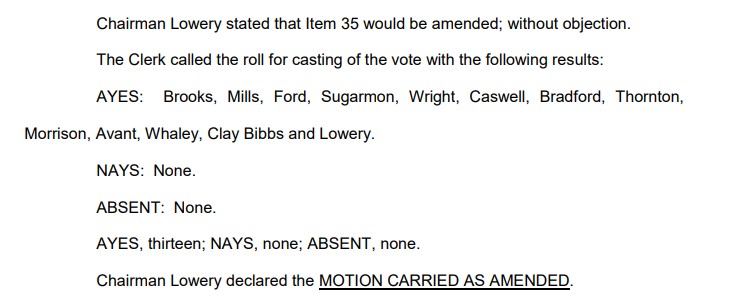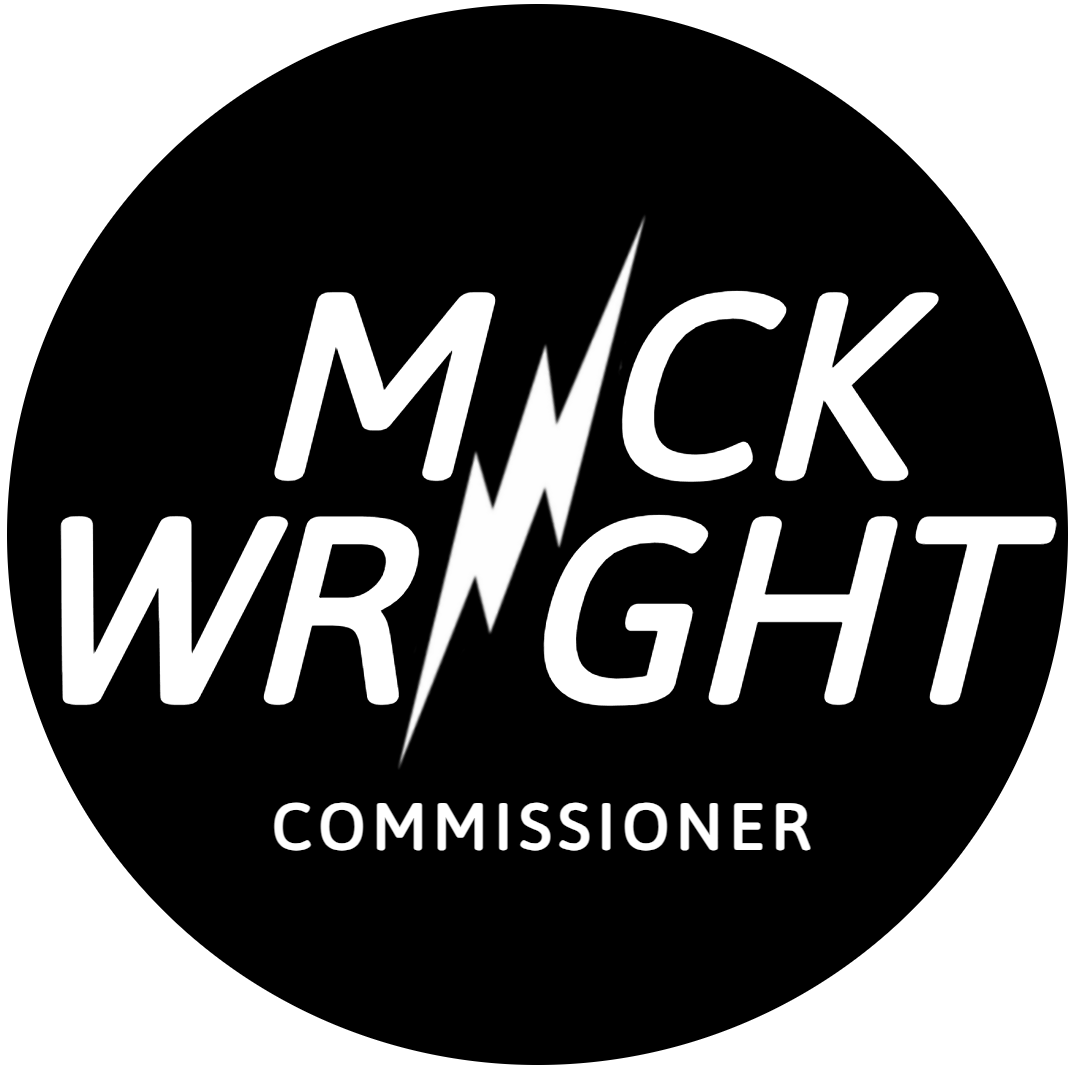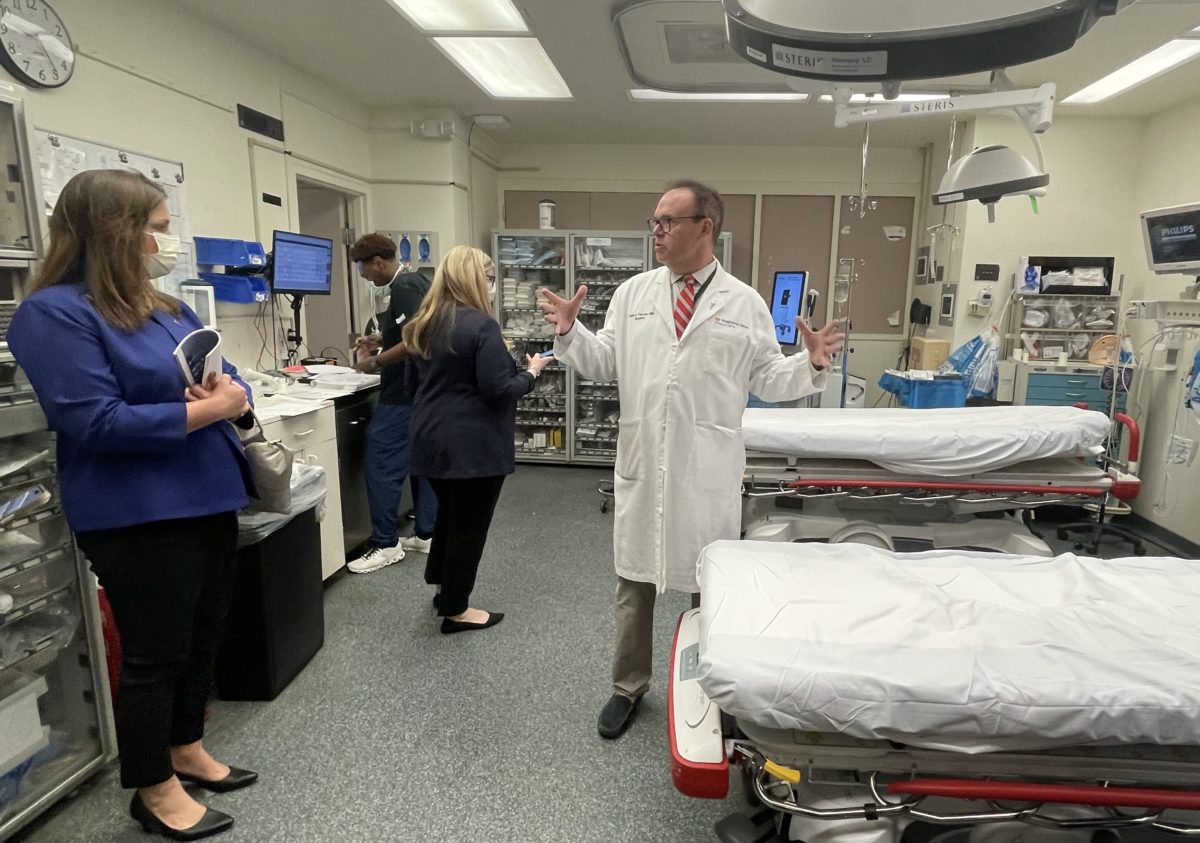This week Shelby County Mayor Lee Harris presented his FY24 budget proposal, which features infrastructure spending plans for Regional One and school buildings.
But the story did not begin this week. Some context is needed.
Regional One
For several years, the leadership at Regional One Health has sounded the alarm about a need to invest in a new and expanded campus to replace the aging hospital, and to serve a growing number of patients that has exceeded what the current facilities can handle.
- Regional One facility assessment
- Regional One facility needs executive summary
- A2H Regional One facility assessment executive summary
- Regional One walking tour photos
- One Campus presentation by Mayor Harris
Regional One is not just one of many hospitals. It is West Tennessee’s only level one trauma center. Citizens of Shelby County and our neighbors are taken to Regional One after suffering severe injuries in shootings, car crashes, fires, and other traumatic events.
With the increased levels of crime and reckless behavior on our streets, the services provided by Regional One have become even more critical.
When police officers are injured in the line of duty, they are taken to Regional One. That’s where Officer Geoffrey Redd was taken after he was ambushed with gunfire at a library that will now bear his name. The Memphis Police Department posts multiple entries to social media daily involving transportation to Regional One Health.
If our trauma center fails, or if diversion rates increase and critical care becomes unavailable, our community will be in a world of hurt, and not just physically. It would have a dramatic impact on our county’s vitality and economic health.
Regional One is a county-owned property. Maintaining these services is a core function and responsibility of Shelby County government.
But because it is also a regional service, local taxpayers should not bear the full burden of maintaining it. That’s why I made securing match funding one of the conditions of my support for any funding plan.
Voting record
While rebuilding Regional One is an urgent task, it cannot happen without a thoughtful, strategic plan.
Adding Regional One spending to the budget without a funding plan is poor leadership. Unfortunately, that has been the story of the past 12 months.
Last year on June 6, Commissioner Van Turner moved to add $5.5 million for Regional One to the FY23 Capital Improvement Plan (CIP) budget, on top of a figure that was already $5 million above the county’s spending policy. The amendment passed 9-2. Commissioner Amber Mills and I voted no.
I voted no because it violated our budget policy, and we had no plan to cover the expense.

Then the resolution as amended came to a vote, and it passed 8-3. Once again, Commissioner Mills and I voted no, and this time we were joined by Commissioner Brandon Morrison.

A few weeks later, the board considered the county’s five-year CIP budget, covering fiscal years 2023 through 2027. Once again, Commissioner Turner moved to add funding for Regional One. This time, a total of $60 million was added over a period of three years, with half going to Regional One and half assigned to schools. The amended resolution passed 7-3, with the same three commissioners voting no – Mills, Morrison, Wright.

To repeat, there was no plan in place to fund any of this.
But Commissioner Turner was not finished. On August 8, he returned with a resolution adding $350 million for Regional One to the 5-year CIP budget. There was no vote taken that day, and it was sent back to committee.
When Turner’s resolution returned on August 29, it was amended to instead request a plan of action from the Mayor, to be delivered early this year. This amended resolution received unanimous support from the board.

So in March, Mayor Harris returned as instructed with the results of a plan drafted by a committee assembled to study the issue, and he sought approval from commissioners on a “go-forward resolution” allowing him to include a funding plan for Regional One in the FY24 budget proposal.
The go-forward resolution was amended and adopted unanimously by the board.

That brings us to this week, in which the Mayor included a Regional One funding plan in his budget proposal.
School funding
While the Regional One planning was in progress, the board was faced with another major infrastructure decision.
A new state law would effectively close three county schools operating within the municipal limits of Germantown. While students in two of the “3G schools” could be absorbed into other existing school buildings nearby, the area’s high school students would have nowhere to go.
The cost of this state mandate to the county was $77.5 million. The settlement agreement came up for a vote on December 14, and it passed by a vote of 8-5. The commissioners voting no were Ford, Mills, Sugarmon, Thornton and Wright.

Once again, millions were added to the county’s budget with no plan in place to pay for the spending.
In addition, the Cordova school was a building that, political factors aside, was not needed. The decision to close three schools and construct a new one was driven by political lines on a map, not by student need.
Finally, the agreement would represent a large investment in schools that might not benefit all school districts, as is generally required by law. That meant the District 3 taxpayers I represent might see zero benefit.
For these reasons, I voted against the agreement, despite my respect for the long-held desire of Germantown citizens to reclaim their properties, and the realization that Cordova students would need a new school.
The mayor’s budget plan addresses these concerns, putting all the school construction spending in the CIP budget, thus allowing all seven school districts to receive their proportional share of the funds.
County taxes
Raising the vehicle registration fee is not popular with taxpayers. The situation is rendered less palatable by the fact that the County Clerk’s office collects the wheel tax, and that office is currently suffering from poor, unresponsive management, led by an elected official I have twice voted to oust and have asked to resign.
But the county has limited options to pay for the spending that has already been adopted (over my objection, as detailed above). The other major revenue source for the county is the property tax, which is already the highest in the state.
Mayor Harris has proposed a small cut to the county property tax rate. That proposal is in line with the conditions placed on the go-forward resolution by the Wright amendment, which all commissioners supported. However, multiple members of the board are now saying they do not support any cut, not even one penny.
My voting record on taxes is this: I have only voted to hold even or reduce the property tax rate. We were successful in doing that for the last four years. The property tax rate is lower now than when I took office in 2018 (currently 3.39, down from 4.05).
I have also only voted to reduce the wheel tax.
Last term, a resolution to cut the wheel tax by $5 was considered by the board. The date was January 27, 2020. The $5 wheel tax reduction received four yes votes – Bradford, Mills, Morrison, Wright.

Four members is not enough when a majority of 7 is required to pass anything. The only commissioners voting to lower the wheel tax then are the four Republican members who currently serve on the board.
Alternative sources
After Mayor Harris presented a budget proposal reliant on an increase in the wheel tax, I asked if there were any alternatives available. He said no.
Reflecting on where things stand, it’s clear we have reached this situation through political choices at both the local and state level.
Locally, board members have already added millions to the budget without a plan to pay for it – for both Regional One and the schools.
At the state level, officials have limited the county’s options in a few ways. First, by the forced closure of 3G schools, necessitating new construction. And second, by refraining from expanding Medicaid.
According to a 2016 article in the Memphis Business Journal, the state’s decision not to expand Medicaid (as many other states have done) is costing Regional One Health $60 million in unreimbursed care.
If the state had allowed those federal dollars to supplement Regional One’s balance sheet starting that year, today the hospital presumably would have collected more than the $350 million they now seek from the county. And local taxpayers would not bear the full burden.
There’s also a third way in which state decisions have limited the options available to Shelby County.
Lost revenue
Shelby County Assessor Melvin Burgess is bringing attention to “the state’s application of a sales ratio to certain properties [that] has resulted in a decrease in millions of revenue.”
The Commercial Appeal reports, “The amount of decline that will hit Shelby County Government is about $27.7 million for both state-assessed properties and personal properties.”
Because a $50 wheel tax increase is expected to bring in only $30 million, it would take most of that new collection just to stay even.
In conclusion
County officials have a duty to balance the budget, a duty to educate children in public schools, and a duty to maintain the core responsibilities of government.
Upholding those duties will be a tall order this year. I ask for your prayers for the board to make wise decisions this budget season.

